Integument Modifications: Surface Modifications
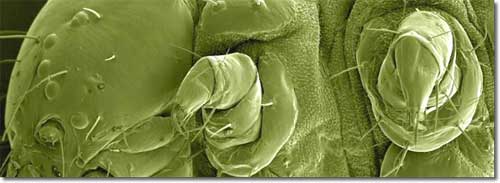
Nanoarrays as light guides: antireflectance
“Glass-wing” cicadas, moths and some flies make use of these arrays to guide light through the cuticle. There is little to no reflectance. This is because the bumps, which are for example 200nm high and spaced 300nm apart, are smaller than the wavelength of visible light. The light interacts with this kind of surfaces as if there is a continuous refractive index gradient between the air and the cuticle. This decreases reflection because it effectively removes the air-cuticle interface.
Cicadas can produce “invisible” wings and moths and flies can harvest all the light falling on their eyes in reduced light and at night. Reduced reflectance means predators do not see them easily.
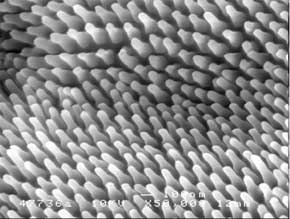
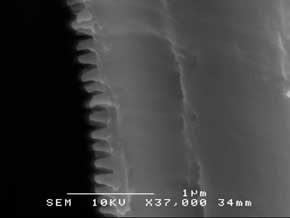
[Images BW Cribb] Setae on the wings of lacewings (Neuroptera).
Light scattering
Here’s how the array works: Light reflects partially when it hits a surface that has a different refractive index from that of the surroundings. We can consider a boundary such as between air and water. Refractive index refers to the speed of light in that medium, so in the case of air and water, light travels faster in air than in water. Some of the light will bounce off the water surface while the rest enters the water. The same is true for air and insect cuticle. Light hits a surface and much of it is reflected off again. But a nanoarray gradually changes the refractive index between the media so none of the light is lost in reflection.
Nanoarrays for reduced wetting and for self-cleaning
Nanoarrays also affect the ability of surfaces to be wet. When an array is present fluids form into balls rather than spreading out across the surface. This was first discovered on lotus leaves which have a nanoarray covering so the effect is often referred to as the Lotus Effect.
The droplets also clean such surfaces because the nanoarray reduces adhesion of particles to the surface and they are easily picked up by the drops as they roll across the surface. The adhesion between the droplet with its curved surface is higher than the adhesion between the dirt particle and the nanoarray.
Setae can be modified to increase hydrophobicity using the same principle as nanoarrays. Roughness affects the hydrophobic nature of a surface. Insects make use of this by incorporating nanostructure into the setae or protuberances on the wings, body and legs. We see this with lacewings and termites. Not only do the seta provide a spring-like bed that holds water droplets away from the surface of the body, but the fine grooves trap air and will not penetrate water. This allows such insects to avoid drowning when they contact water. It is why some termites can fly in the rain.
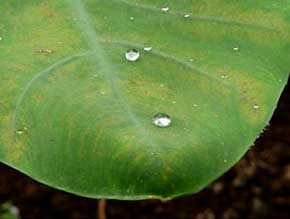 |
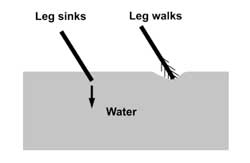
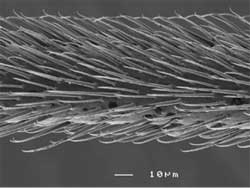 |
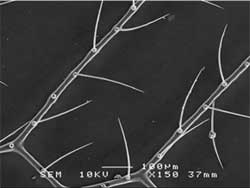 |
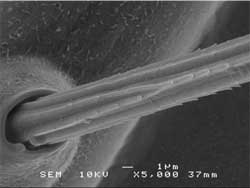 |
[Images BW Cribb] Setae on the wing veins of lacewings (Neuroptera) |
|
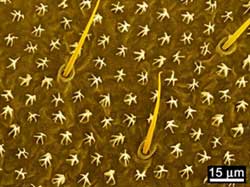 |
Sculpturing on the surface of termite wings causes them to shed water. [Image BW Cribb] Setae and micrasters on the wings of termite |
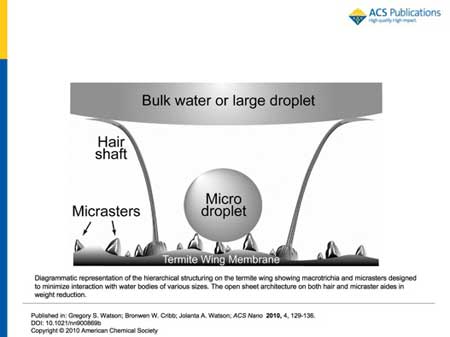 |
|
TOPIC REVIEWCan you …?
|

